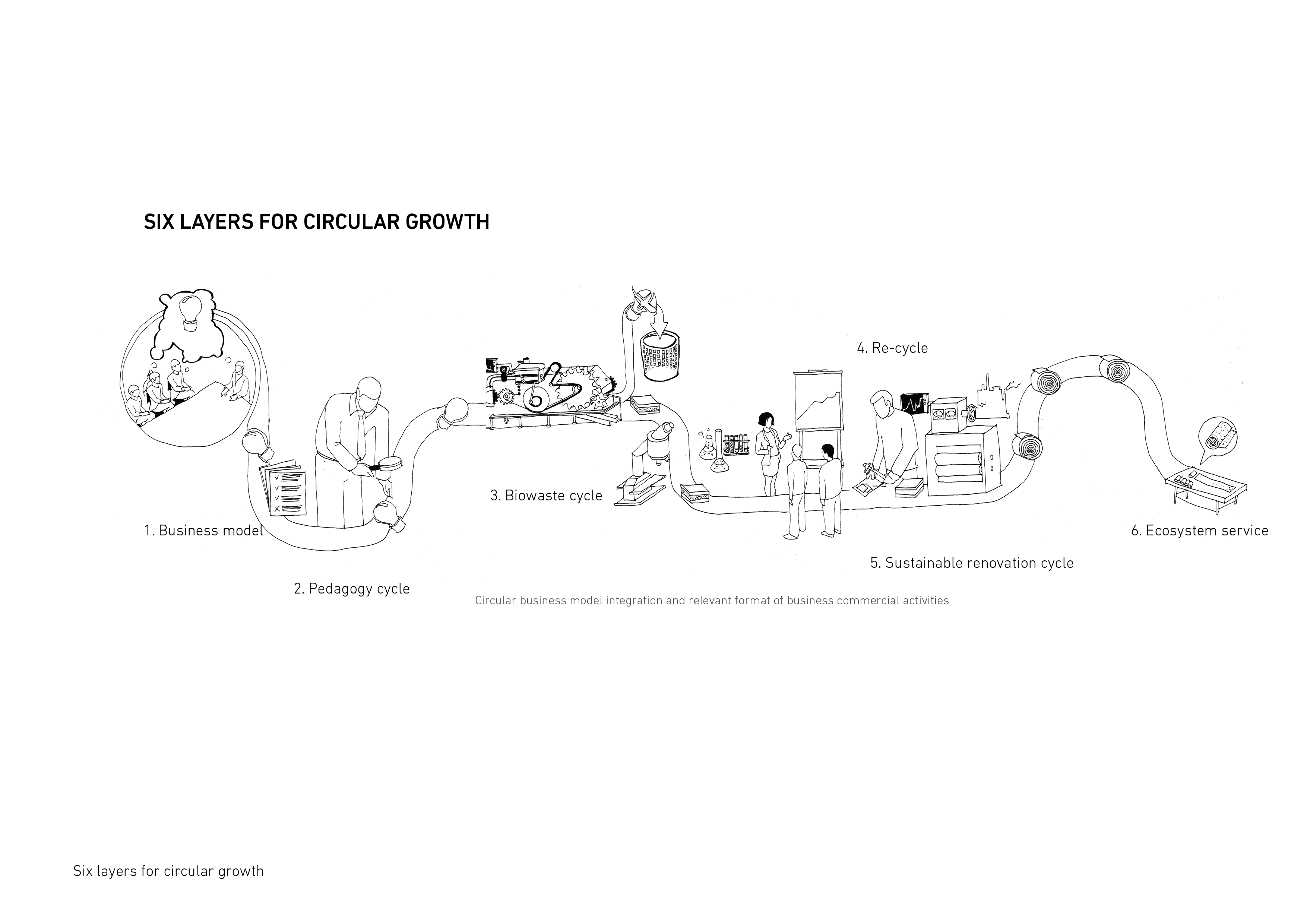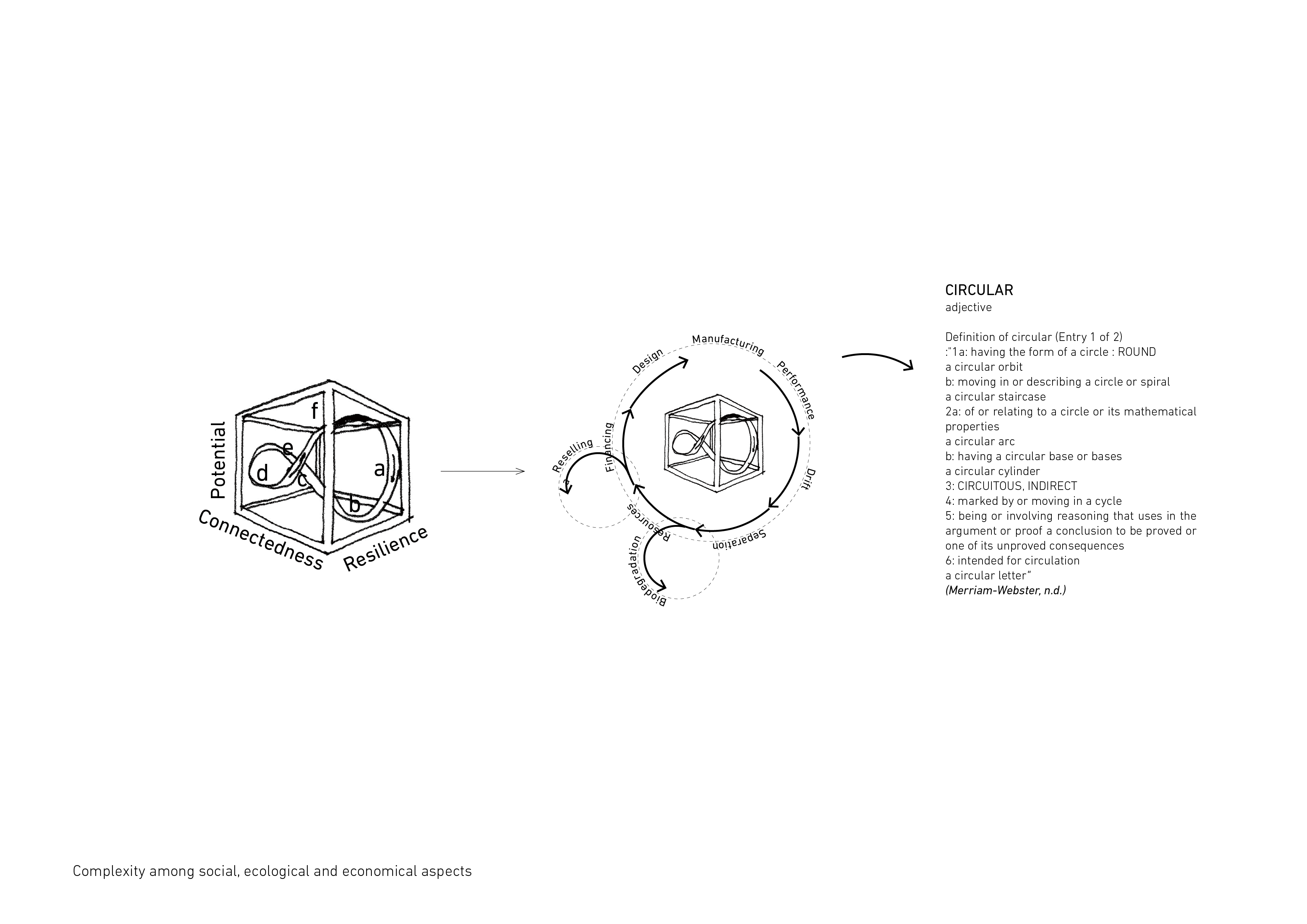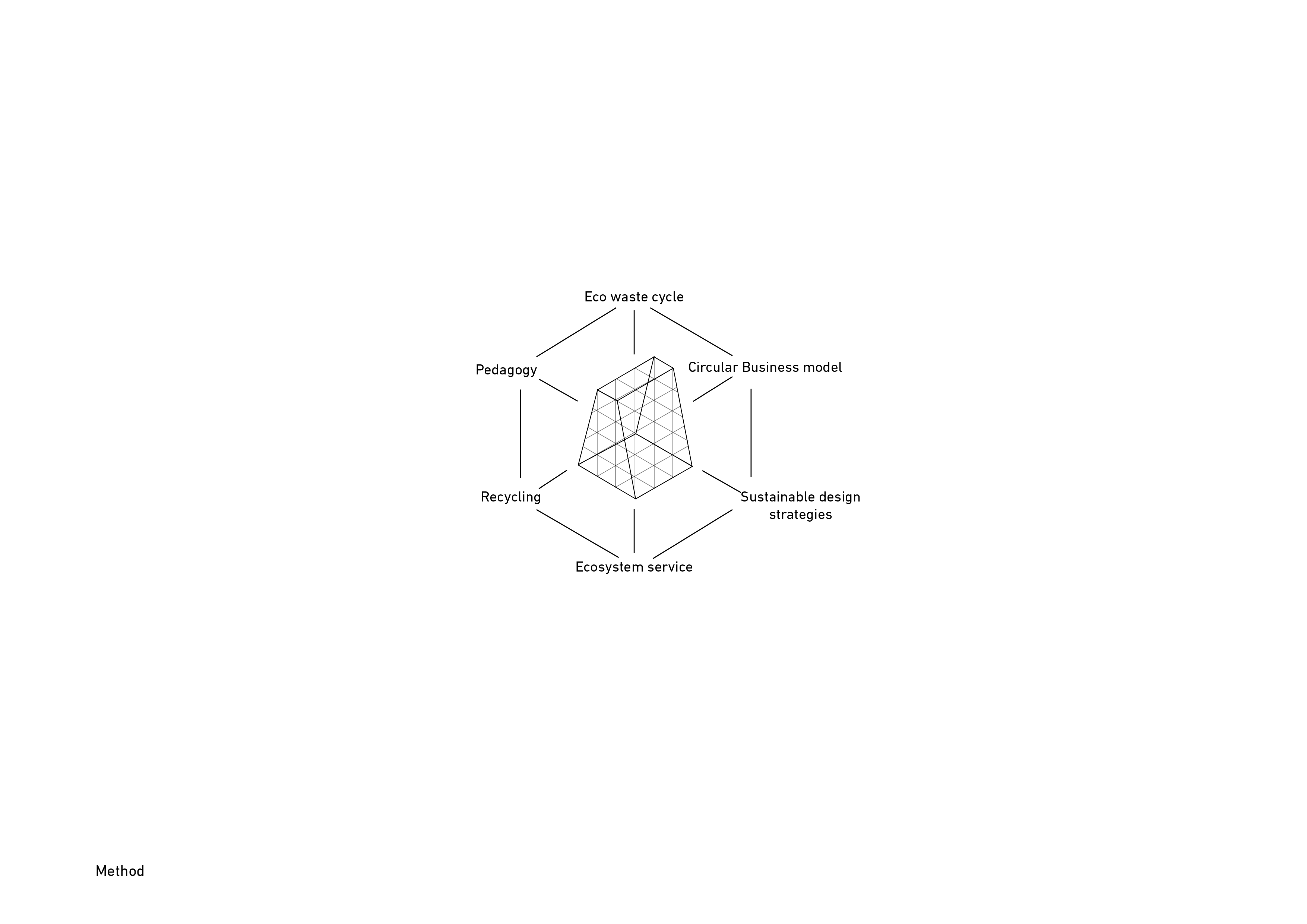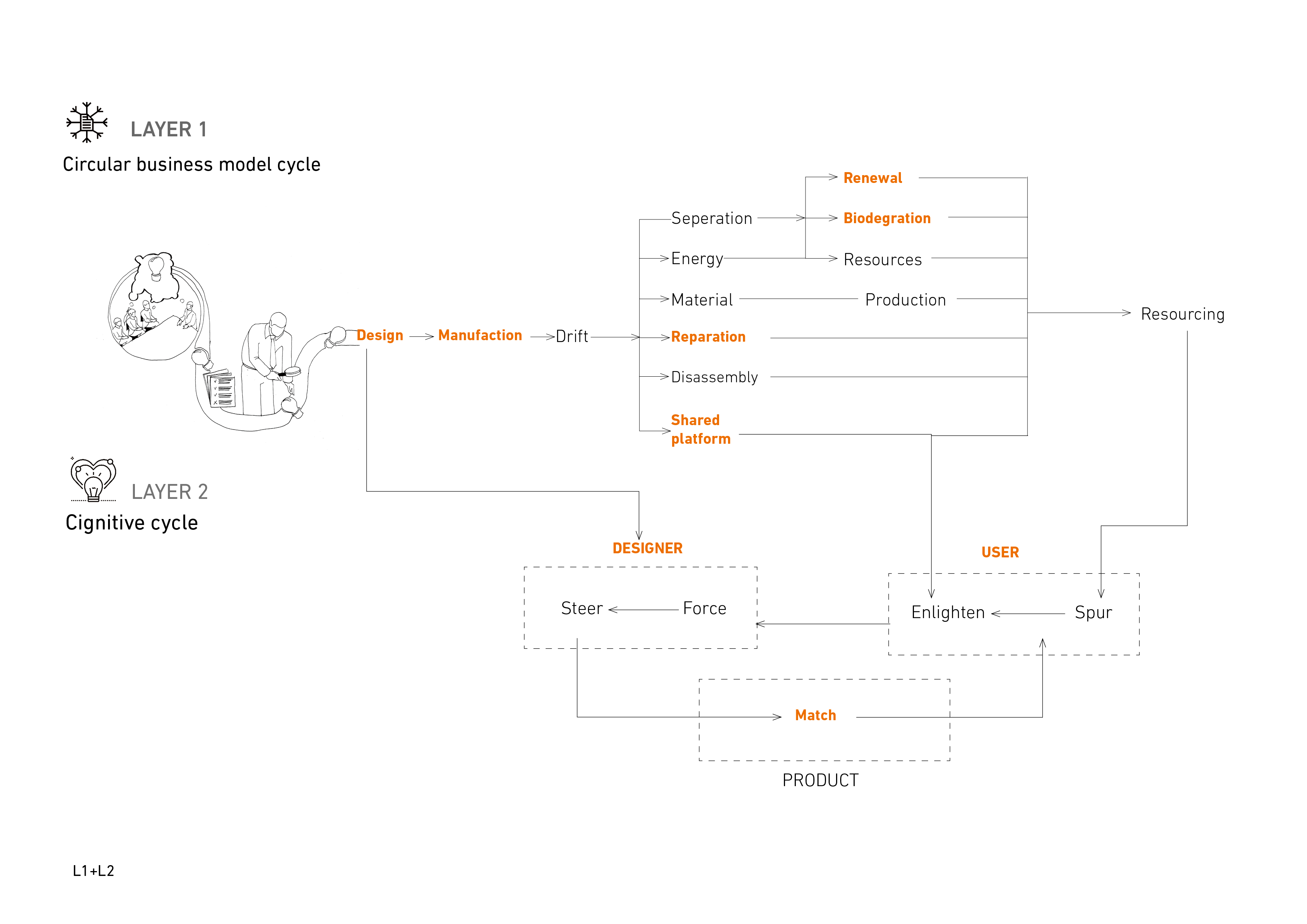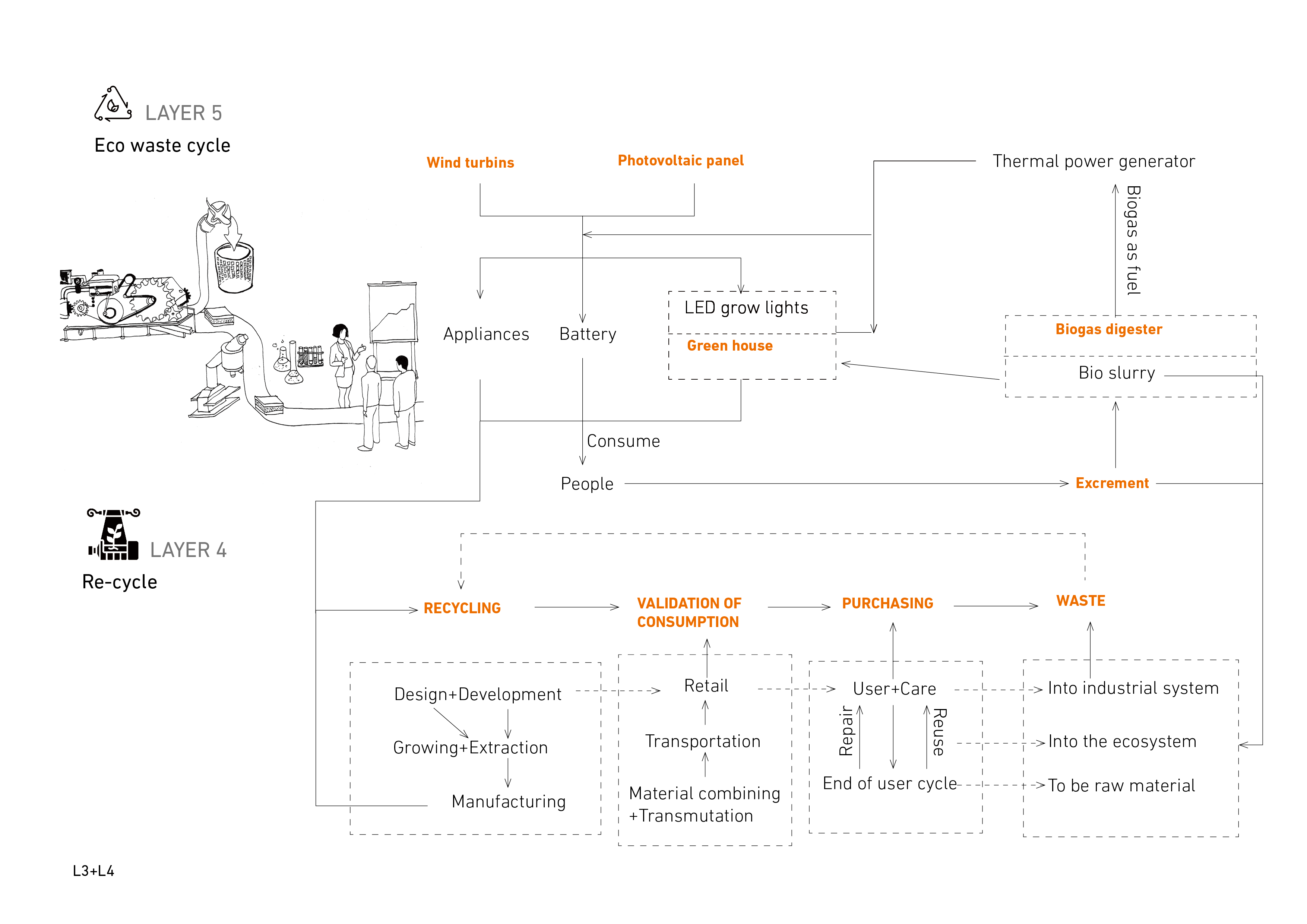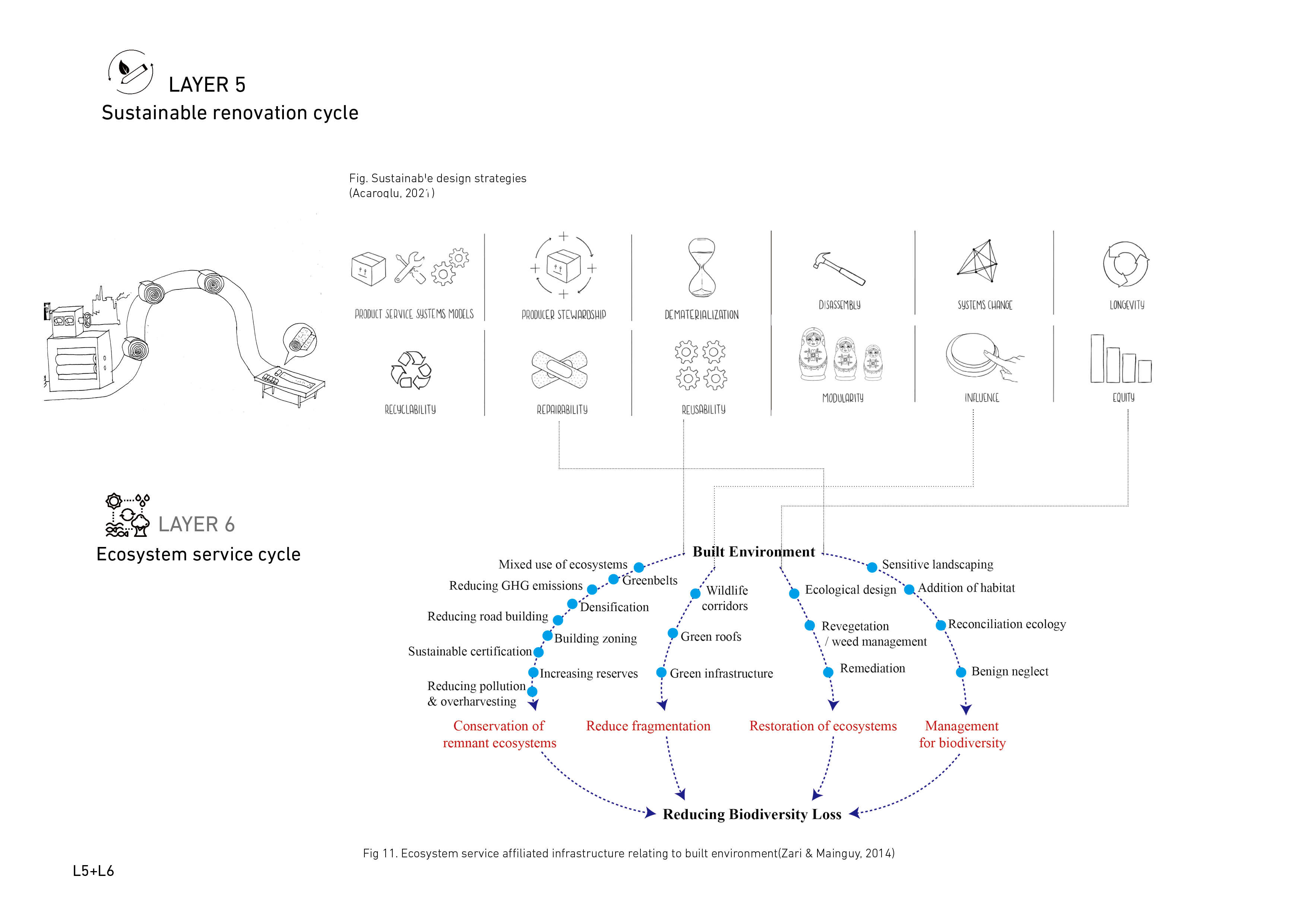The toolbox of six layers
A system is a set of related components that work together in a particular environment to perform whatever functions are required to achieve the system’s objective.
-Diella Meadows
Complexity among social, ecological, and economical aspects
The method showcased here in a production flow chart is to navigate how the layers of circular strategies are generated and visualized. So from the starting point, it has been displayed as following:
- Business cycle
- Pedagogical cognition for circulation
- Biowaste cycle
- Waste treatment cycle
- Sustainable building lifecycle
- Eco-system sensitive landscape cycle
Circular thinking is a way to use systematic way giga-mapping out all related factors after the material exhausted or waste disposed of. To generate new value from the old matter is the substance of circular thinking and the form of a circle.
The project will showcase each layer of renovation method on the abandoned wasteland and see how it has and will influence the future of the industrial heritage such that it could be reborn as a museum for circular development.
Business cycle+Pedagogical cognition for circulation
The first two groupings come to the circular business layer and pedagogical layer in a way related to two main actors: user and designer. It is to show how a designer could be a positive motivation to push forward the circular economy model and the respective impact it could gain and iterate with the user behavior and demand. The match shows if the circular part of manufacture could match the demand of the user, it would work and into a positive circulation.
Bio-waste cycle + Re-cycle
The second layer grouping comes from the Eco-waste cycle and Re-cycle. The combination is to build a bridge between biological waste and technical waste which also follows the principle of Cradle to Cradle. The systematic network has shown how the energy, material, and design workflow among ecosystem and industrial systems, with a special focus on the recycling process and bio-waste regeneration on a building scale.
Sustainable building lifecycle + Ecosystem service cycle
The third layer grouping is as shown: the sustainable building lifecycle and ecosystem service cycle. The way they interwind with each other is by assessing the principles of sustainable building evaluation to the ecosystem service properties in the realm of reuse, accessibility, influence, and equity. The connection could provide us the inspiration of how to extend the context of sustainable building design to sustainable environmental design.
